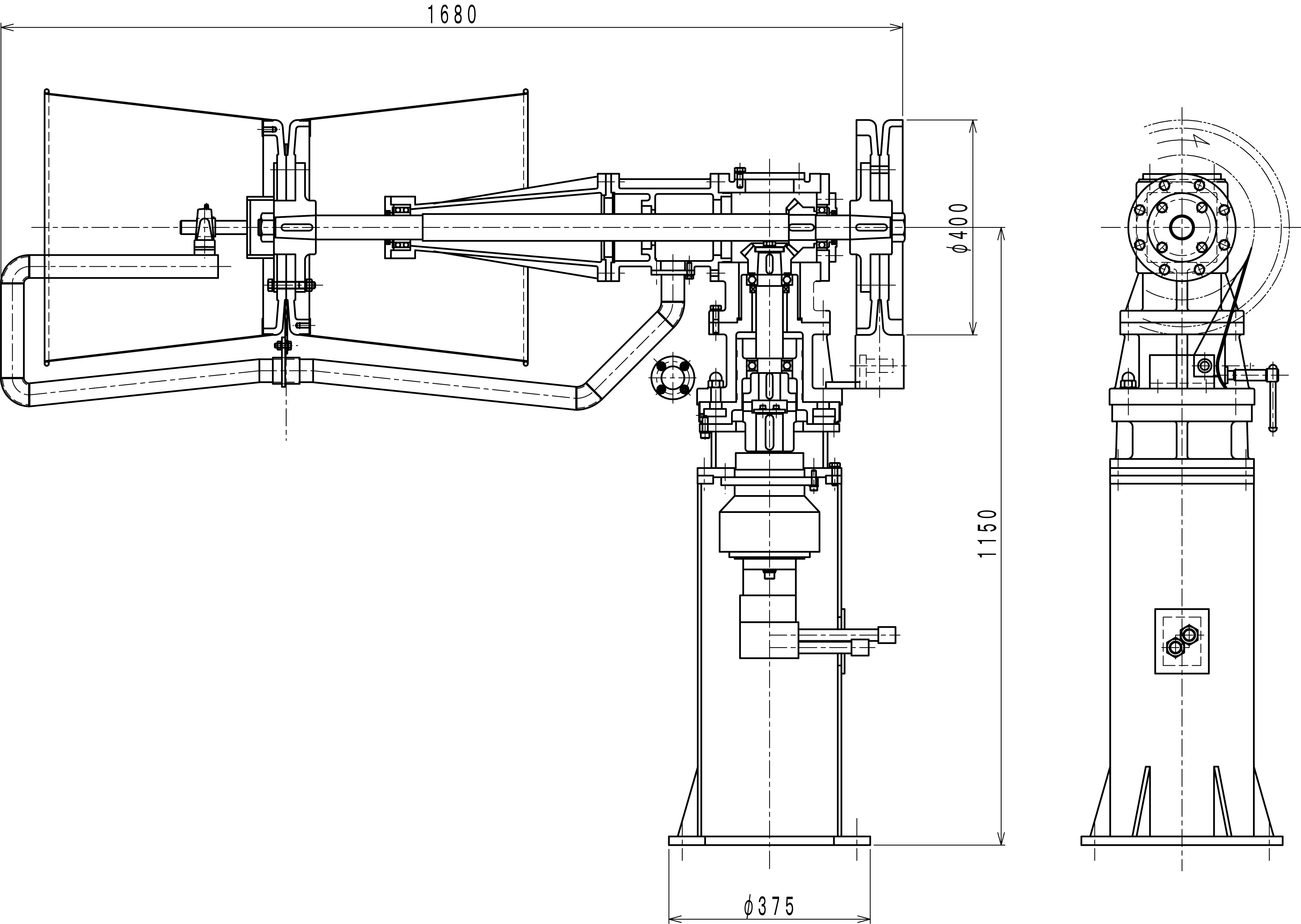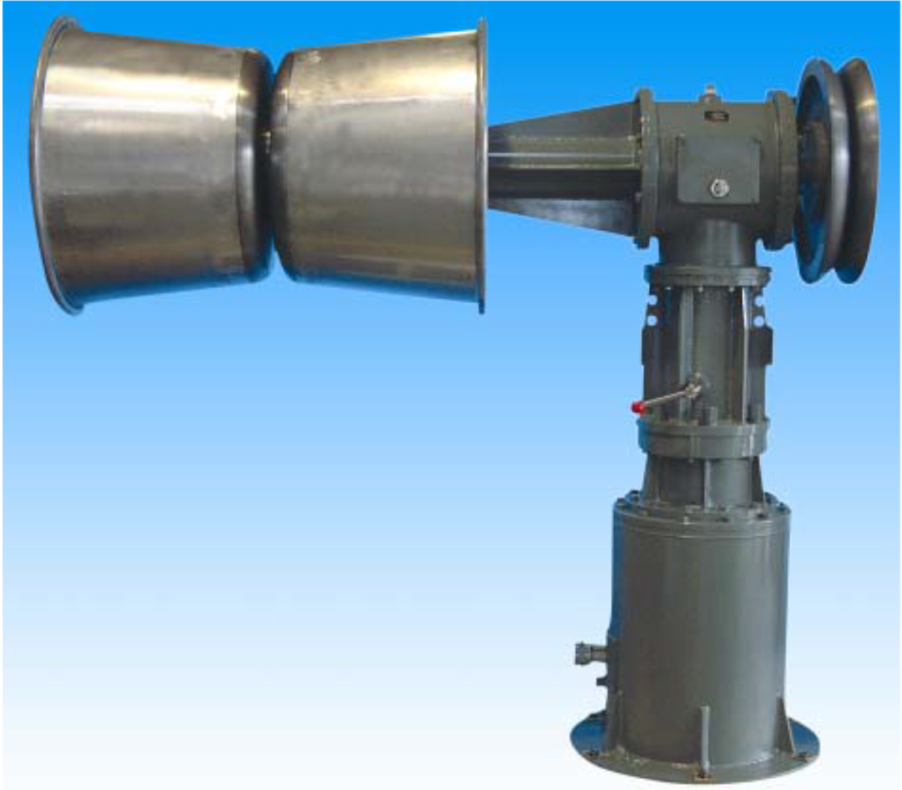Net Hauler
Net Hauler
This machine is used for the work of lifting net. Its capability is from 1 to 3 tons and can save the net lifting labor work.
Outer dimension

Specification
Ex) Model : GH218

I Main calculation formula of hydraulic pressure device
-
Hydraulic pump
- 1) axis input of a pump
Ls=(P・Q/60η)・102 - 2) Oil power of the pump
Lp= P・Q/60=η・Ls・10-2 - 3) Total efficiency of the pump
η=ηv・ηt・10-2 - 4) Capacity efficiency of the pump
ηv=(Q/Qth)・100≒(Q/Q0)・100 - 5) Efficiency of the motor
ηe= Ls/ Le
- 1) axis input of a pump
-
Hydraulic motor
- 1) Theoretical Displacement volume of Hydraulic motor
Dth=(2π・T)/(P・ηt)・102 - 2) Output power of Hydraulic motor
Ls=2π・T・N/60000=η・(P・Q/60)・102 - 3) Input power of Hydraulic motor
Lm=P・Q/60 - 4) Capacity efficiency of Hydraulic motor
ηv= (Dth・N/Q)・10-1 - 5) Torque efficiency of Hydraulic motor
ηt= (2π・T/P・Dth )・102 - 6) Total efficiency of Hydraulic motor
η=ηv・ηt・102= (Ls/ Lm)・102=(2π・T・N/P・Q)・10-1
- 1) Theoretical Displacement volume of Hydraulic motor
-
Cylinder
- 1) Necessary pressure to a cylinder
P1=(1/ A1)・(F/ηc+P2・A2・102) ・10-2 - 2) Necessary flow rate for a cylinder
Q= A1・v・10-1+QL - 3) Driving force of a cylinder
Acceleration ability
F1=m・α=m・v1/t
Static wear resistance
F2= μs・m・g
Dynamic wear resistance
F3= μd・m・g
- 1) Necessary pressure to a cylinder
The explanations of symbols
Ls: input of pump shaft, output power of the motor, the output power of the motor (kW)
Lp: oil power of the pump (kW)
Le: input power of the motor (kW)
Lm: input power of the motor (kW)
P: Discharge pressure of pump, differential-pressure of the input/output port of a motor (MPa)
P1: necessary pressure to cylinder (MPa)
P2: pressure of the cylinder inflow (MPa)
Q: discharge amount at the time of discharge pressure P,
inflow oil amount to the motor, necessary flow rate of the cylinder (large/min)
Qth: theoretical discharge amount (l/min)
Qo: discharge amount at the time of discharge pressure P≒0, (l/min)
QL: Leak inside the cylinder (l/min)
T: shaft torque (N・m)
N: number of rotations (min-1)
η: Total efficiency of the pump, total efficiency of the motor (the %)
η v: capacity efficiency of pump, capacity efficiency of the motor (the %)
η t: torque efficiency of pump, torque efficiency of the motor (the %)
η e: efficiency of motor (the %)
η c: driving force efficiency of cylinder (0.9-0.95)
Dth: theoretical displacement volume of the motor (cm3/rev)
A1: inlet side pressure receiving area of cylinder (cm2)
A2: outlet side pressure receiving area of cylinder(cm2)
F: cylinder driving force (N)
F1: cylinder acceleration force (N)
F2: static wear resistance (N)
F3: dynamic wear resistance (N)
v: The speed of the cylinder (m/min)
v1: The speed after acceleration (m/s)
m: The mass of the load (KG)
α: acceleration (m/s2)
t: acceleration time (s)
μ s: static friction coefficient
μ d: dynamic friction coefficient
g: acceleration of the gravity (m/s2)

